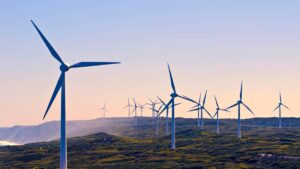Sales of EVs in Australia floated (slightly) higher in 2019

Pic: Vertigo3d / E+ via Getty Images
Electric vehicle (EV) sales in Australia increased by 149 per cent in 2019 compared with 2018, though this is coming from a low base with EVs still making up a tiny portion of all vehicles running on our roads.
Sales of EVs increased from 2,357 in 2018 to 5,875 in 2019; all up, that’s just 14,500 of the almost 18 million cars and light trucks in Australia.
The National Transport Commission (NTC) noted that the big increase in EV sales (in percentage terms) does reflect the growing popularity of EVs as consumers become more aware of their carbon footprint.
“One of the key findings in the report is that if we choose new vehicles based on emissions performance, we can have a significant impact,” NTC executive leader sustainability Sandra McKay said.
“If everyone who purchased one of Australia’s top 10 selling cars or utes last year had chosen the best-in-class vehicle for emissions, Australia would have recorded a 63 per cent reduction in emissions intensity from the cars sold.
“Instead, Australia recorded a 0.2 per cent drop in emissions intensity.”
This is due to the shifting preference over the last decade towards heavier vehicles with larger, more power engines in Australia.
By comparison, European and Asian markets are trending towards smaller vehicles with lower emissions.
READ: Australia risks being a dumping ground for bad cars if it doesn’t act on EVs
Growing Australia’s renewable resources
However, while growing sales of EVs does provide some hope for lowering emissions, it is just one part of the broader picture.
The Australian Academy of Technology and Engineering (ATSE) believes that Australia can be a world leader in low emissions energy due to the development of new technology, declining costs, and increasing use of energy from renewable sources such as solar and wind.
“Australia is already making great inroads in the uptake of low emissions technologies such as solar and wind with renewable energy from these sources generating almost 20 per cent of Australia’s total electricity generation,” ATSE Energy Forum chair Dr John Söderbaum said.
“Renewable energy is getting cheaper, and the technology exists today to scale up production and introduce mechanisms to ensure the reliability of supply, move towards meeting domestic and industrial energy needs, and transition to electric and hydrogen fuelled transport systems.
“The key next step is to continue to develop and adopt storage solutions that increase our ability to rely on renewable energy and allow generation using older, emissions-heavy fossil fuel technologies to retire.”
For Australia to become a world leader in renewable energy, the ATSE has recommended six crucial actions:
- Scaling up infrastructure to support greater use of solar and wind power;
- A rapid transition to electric heating and transport;
- Developing a hydrogen energy economy;
- Further R&D in emissions reduction technologies;
- Skills development, and;
- Scanning and, where appropriate, adopting new technologies developed overseas.
Dr Söderbaum says the ATSE recommends continued government and private sector support for further research and development, production, storage and network integration of all low-emissions energy sources.
“Australia can benefit from creating low emissions solutions across industries as diverse as transport (including automobile, aviation and shipping) and steel production.
“Agriculture is another area where Australia can lead the way in transforming energy systems to carbon-neutral methods through technologies such as carbon sequestration.”
Watch: StockTalk: 3 experts weigh in on Australia’s clean energy future
Related Topics
UNLOCK INSIGHTS
Discover the untold stories of emerging ASX stocks.
Daily news and expert analysis, it's free to subscribe.
By proceeding, you confirm you understand that we handle personal information in accordance with our Privacy Policy.








